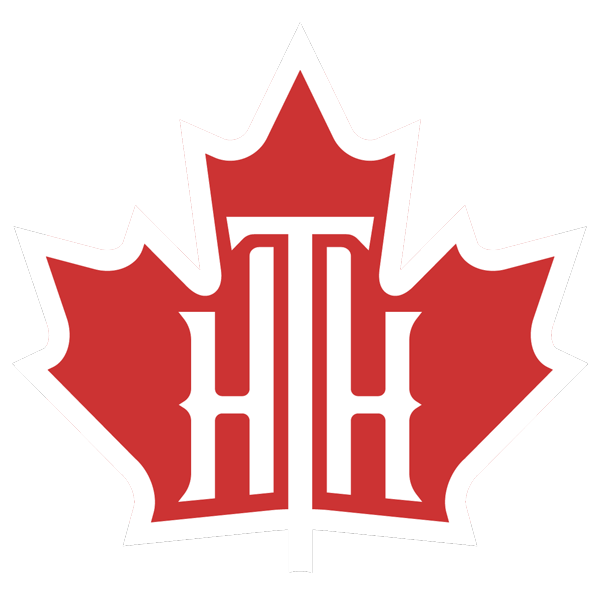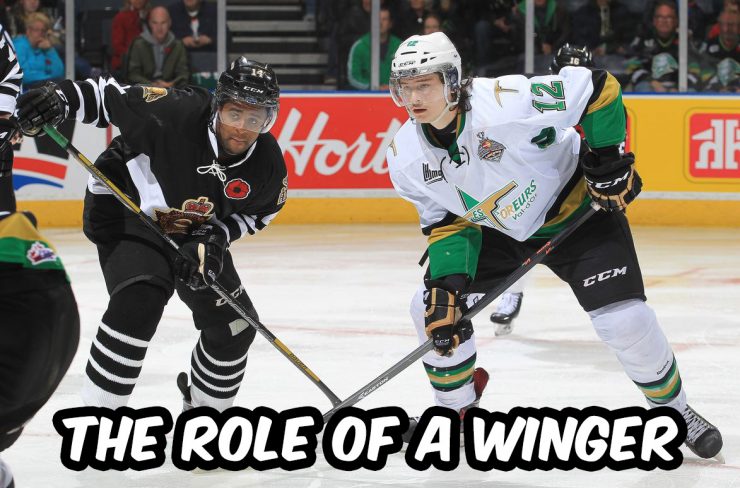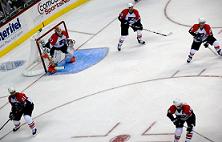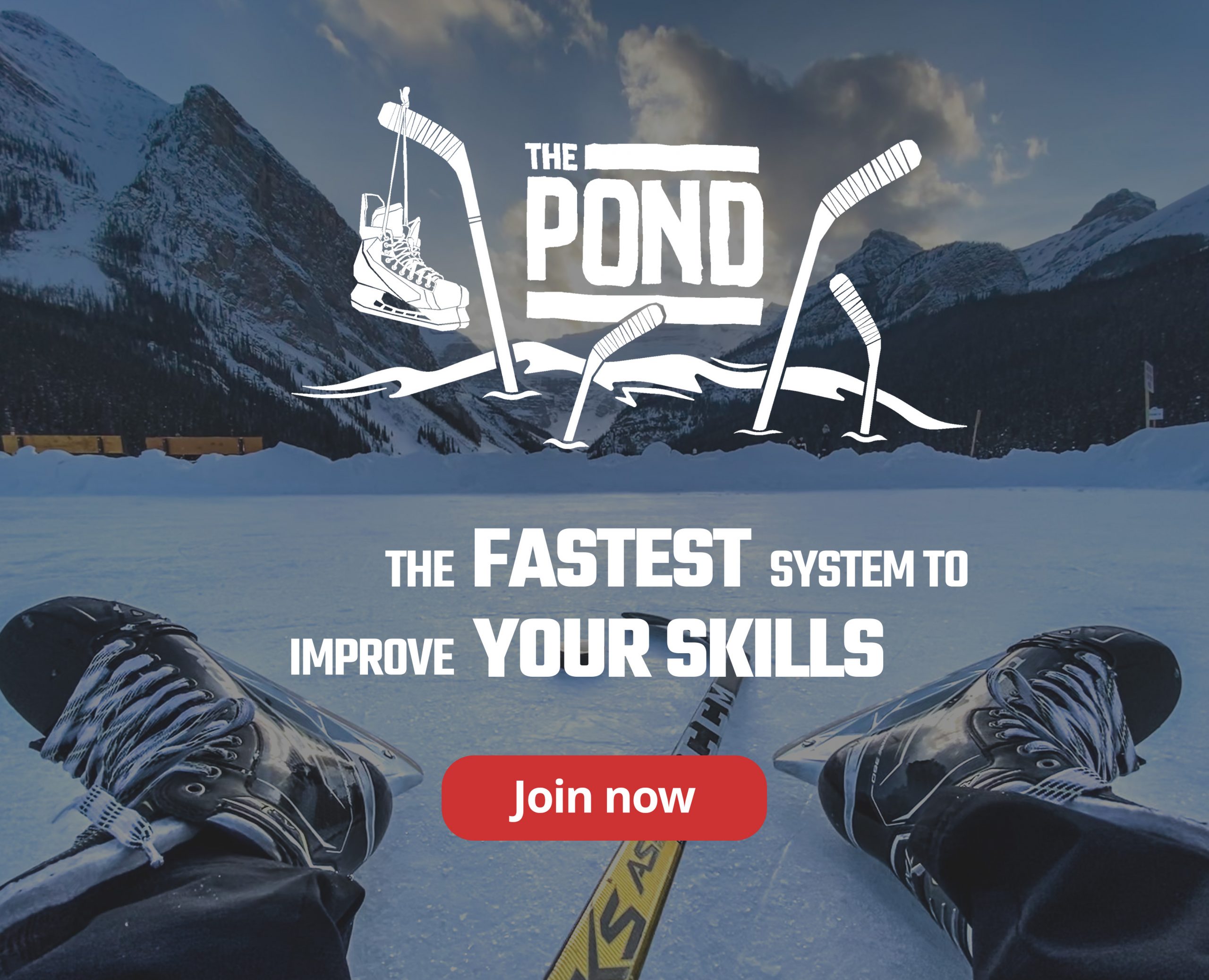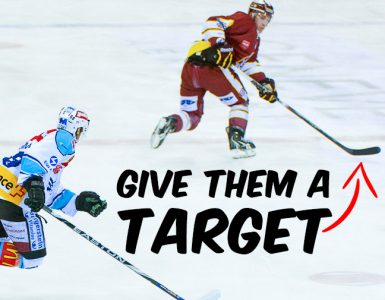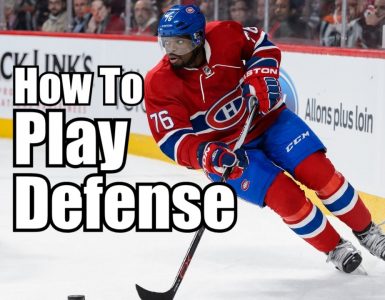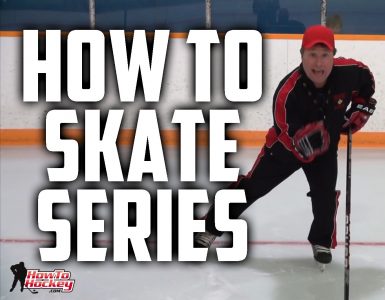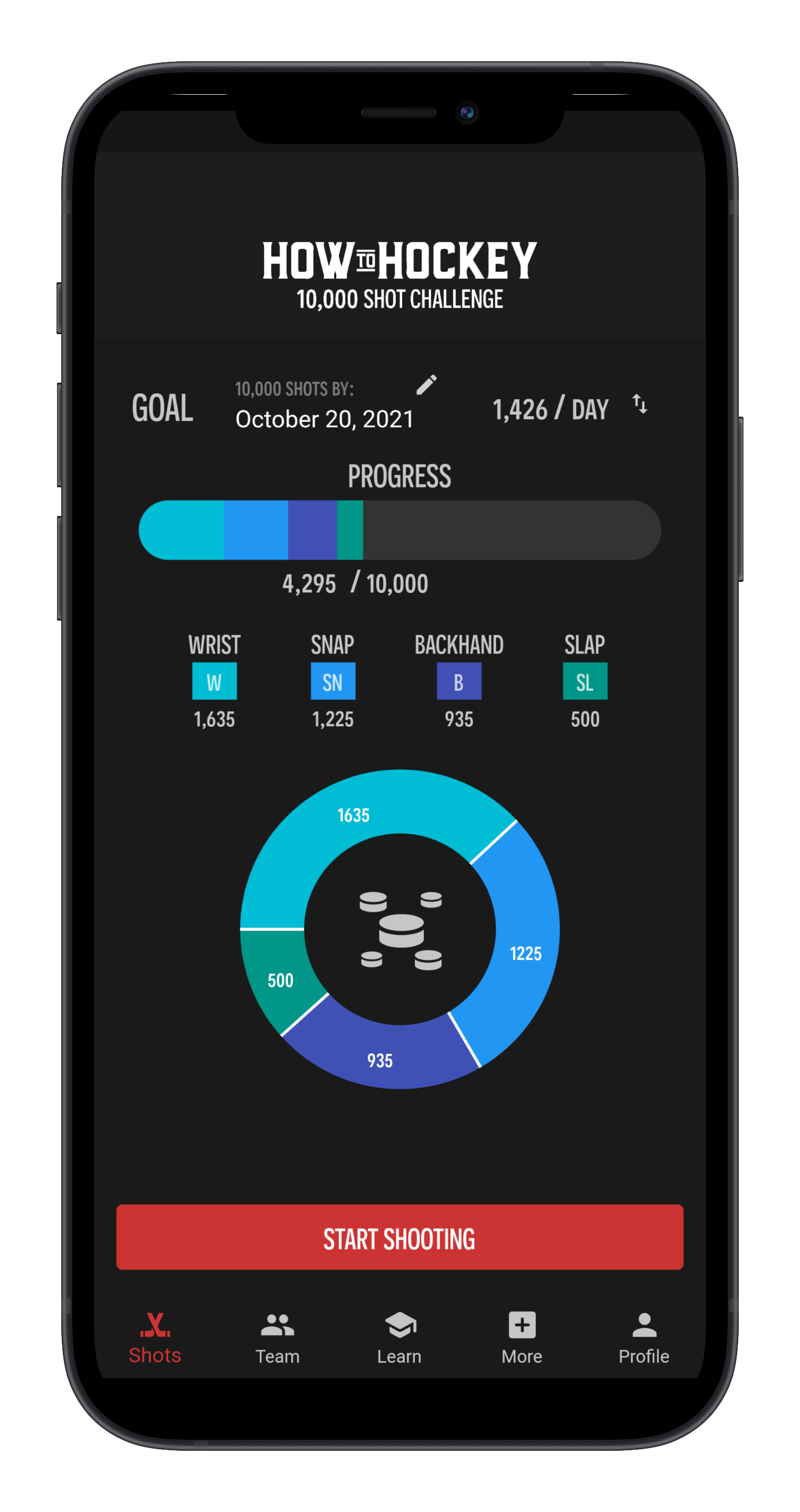There are two wingers in hockey, right wing, and left wing. Both wing men, as well as the centermen are referred to as forwards. The forwards are offensively minded and will score the majority of your teams goals. As a winger you will mostly play on your side of the ice, right wing will play up and down the right side of the ice (to the right of the centermen at faceoff) and the left wing will play on the left side.
The responsibilities of a winger
Your general duties as a wingman are to dig in the corner, feed the centermen and defence, wreak havoc in front of the other teams net, and outsmart the other teams defensemen on both ends of the rink. I will explain more below
A wingers duties and positioning in the defensive zone 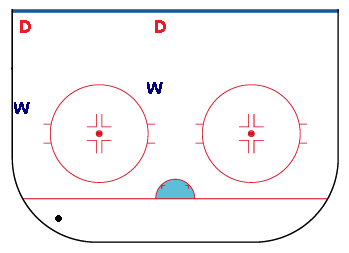
The defensive zone is your teams end of the ice (the side where your goalie is in net) When you are playing in the defensive zone your team is trying to get the puck out (break out) and get into the offensive zone (the other teams end of the ice). When you are in the defensive zone you should generally stay between the blue line and the hash marks. You want to stay in that area for a few reasons:
- To stop the other teams defensemen from getting the puck and getting a shot on your goalie.
- To get a break out pass from your own team member
- To block shots or passes if the other teams defensemen does have the puck.
- To intercept passes and break out.
Video Tips on Defensive Zone Coverage For Wingers
This video was created by Kevin at HockeyShare.com, thanks for the awesome tips! Most wingers start just trying to cover the defense. As you get older and more skilled you can come down further and further like shown in the video.
What is your job in the Defensive zone?
When you are in the defensive zone it is your job to cover the other teams defensemen. When the other team has the puck you should keep a close eye on the defensemen as some times they will sneak in front of you, or move over to the center. When you are in the defensive zone the defensemen is your man, but it is also your job to accept passes from your own team members. You typically stay between the hash marks and the top of the circle. You will come up to the blue line when challenging the defence.
If your team has the puck there are a few ways to get the pass. The easiest way to get a pass is to take a few quick strides forward and take a pass at the hash marks along the boards, now your job is to break out. The safest way to break out of your end is to bank a pass off of the boards to your center men who should be breaking out, or if the defensemen is right against the boards you can gently redirect the puck to your centermen, or your winger who should be cutting to center (Always look before passing because the last thing you want to do is give a one timer to the other teams defence!). Another option is to carry the puck out yourself, don’t try anything to fancy because if you mess up and the other team scores it will be very embarrassing.
How to break the puck out of the defensive zone
One of the biggest responsibilities of the winger in the defensive zone is breaking the puck out. Usually you will be taking a pass from the defencemen and it is then up to you to receive the pass, control the puck and either break out with it, or make a quick pass to your centremen or other winger. Playing the puck off the boards and making yourself available to receive that pass from the defencemen is VERY important. Here is a great video from HockeyUS.com that explains how you can become more effective when breaking out of the defensive zone
A wingers duties in the offensive zone 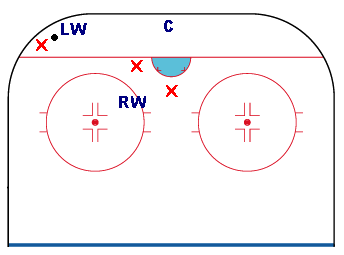
When you are in the offensive zone your team is trying to score a goal. You will mainly play in the corner, inside the circle, and in front of the net. When the puck goes into your corner it is your job to get it out. If the puck is in your corner you have a few options, the most common and usually the best options are.
- Carry the puck out and get a shot on net (your centermen or other winger should be there for a rebound).
- Look for a man in front of the net and set him up with a pass
- Look to see if the D is open, if so give them the puck.
- Carry the puck up the boards a bit and cycle it back. Cycling the puck may be a bit advanced, so we will cover that in another article
Sometimes when the puck is in your corner the other teams defence will get there first, as it is their job to get the puck out. If this happens you can try to take the puck from them, or tie them up and wait for your centermen to help you out. A good trick is to put your knee between their legs and press them up against the boards, this makes it hard for them to move the puck.
If the puck is in the other corner then you have a few new jobs. When the puck is in the other corner you can.
- Go to the net and look for a pass from the winger
- If your winger looks like he is going to be tied up you could skate behind the net and call for a pass
- If it looks like the other team may get the puck you could skate to the hash marks and try to cover a man / take away a pass.
- If the other team does clear the puck being closer to the blue line makes it easier to back check.
- Do not go into the other wingers corner unless you have learned a special drill in practice that calls for this. If your winger is in trouble, it is the job of the centermen to help him out.
Wingers duties in the Neutral Zone
Typically in the neutral zone you are either breaking out, or back checking. If you are on the attack you make hard passes through the neutral zone and feed the head man. This means if you get the puck out of your end you should be looking for a streaking centermen or your other winger. If there are no options try to break into their end, and if that is not an option just cross the red line and dump the puck in (then chase it, or get a line change). If your team mate has the puck and you are breaking out skate for open ice and try to get that lead pass.
If the other team has the puck in the neutral zone you are playing defense. You should be hustling to get back into position and get the puck from them / cause a turnover. Keep an eye on who has the puck, and where they might be skating to or who they might be passing to. If you see a potential passing lane try to block it.
I like to always think of the ice as lanes, lanes for them to skate and lanes for them to pass. I am always looking at the guy with the puck and thinking “what are his lanes, what are his options” I try to get in their lanes and take away options.
What about the faceoff? 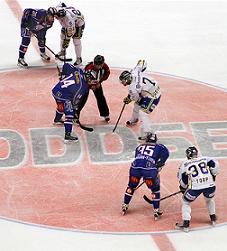
For a winger you also have a role on the faceoff. When you faceoff you will be facing off against the other team. When you are on the face off both teams want the puck, but only one team can have it. This means your role during the face off is to either get the puck, or stop the other team from getting it. Talk to your centermen before the faceoff because he usually has a devious plan as to what he is going to do with the puck. Most face offs involve winning the puck back to the defensemen, when this happens your job is to tie up your man so your defensemen has time to make a play. Sometimes the centermen will pole the puck forward and have you pick it up with speed, or the centremen could tie up the other centermen and have you get the puck. This means you have to explode off of the hash mark and go right for the face off circle.
A wingers responsibilities on the power play
A power play means that the other team is playing with one less man on the ice. Your position does not change during the power play unless you have a set play with your team. When the other team is down a man they will play with two defensemen and two forwards, this means that on the faceoff there will one open spot. This means if you are on the open wing, and the centremen wins the faceoff to you, you will have some time to skate with the puck and set up a play.
Wingers duties on the penalty kill
When your team gets a penalty there will be one less man on the ice. This means that on the faceoff you need to pick a side to faceoff on. The proper side to faceoff on is the side closest to the center of the ice. If you were to faceoff on the side closest to the boards then the side closest to the center would be wide open, and give the other team more of an advantage if they win the faceoff.
When you are on the penalty kill you should think of your position more like another centermen. If the puck goes into the offensive zone either you or the centremen will go in after the puck, only one man should go deep into the offensive zone, while the other hangs back near the blue line.
When the puck is in the defensive zone most teams play in a box formation, this means your two defensemen will play down low, and the centermen and the winger play up high. The idea is your formation will look like a box, and you want to keep the other team outside of the box, and take away any passing or shooting opportunities.
If you have any other tips for positioning for forwards you can add them below. I will be adding positioning for the centermen and defence soon.
If you’re looking for more ways to improve your hockey skills, check out The Pond. The Pond is our all in one hockey training platform designed to continually challenge players. We provide you with the most efficient path to improve the skills you will use the most in game. Use coupon code TRYOUTS to get your first month 100% free!
The Role of a Centerman
Want to read more about hockey positioning? Check out our article for the role of a centerman
Photo Credit: Thumbnail – Dan4th Nicholas, Breakout – U16 Panthers, Faceoff – Michael Erhardsson, Penalty Kill – C Stein
